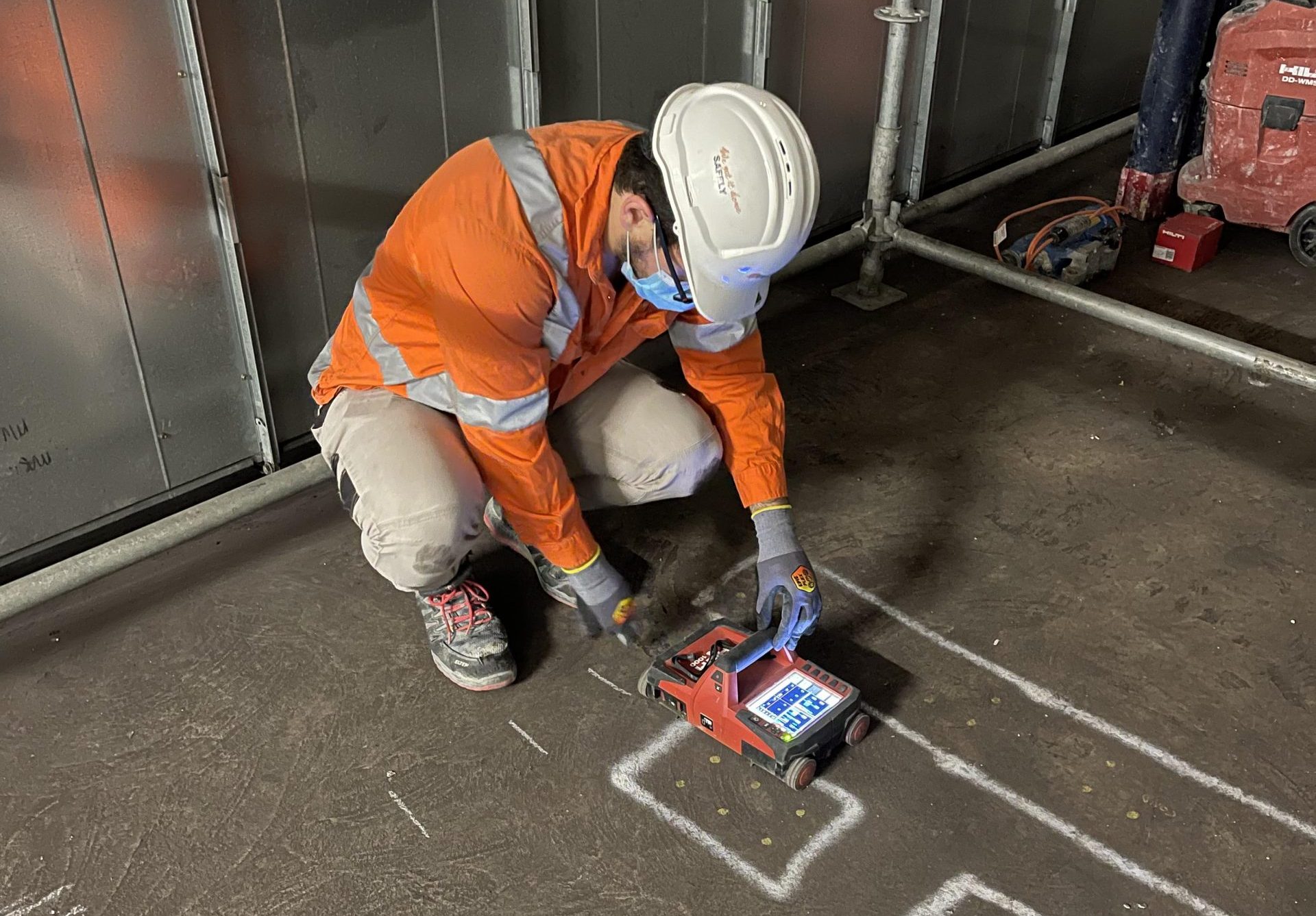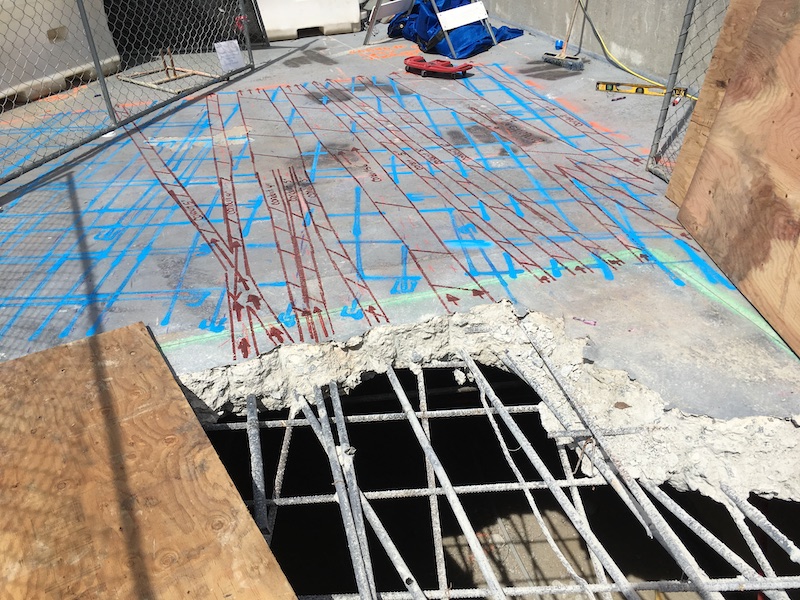RainierGPR Concrete Scanning: Cutting-edge Solutions for Complex Tasks
RainierGPR Concrete Scanning: Cutting-edge Solutions for Complex Tasks
Blog Article
The Relevance of Specific Concrete Scanning in Finding Underground Hazards
The ability to properly find and map these underground threats is not simply a matter of convenience however a crucial facet of guaranteeing the safety of both building and construction workers and the stability of the task itself. By deploying innovative scanning modern technologies and approaches, professionals can reveal concealed dangers, avoid costly problems, and ultimately pave the means for smoother and much safer construction endeavors.
Advanced Scanning Technologies for Discovery
Cutting-edge radar systems are reinventing the field of below ground detection by providing unmatched accuracy and efficiency. These sophisticated scanning modern technologies make use of ground-penetrating radar (GPR) to develop in-depth images of subsurface structures, providing insights right into what lies under the surface with exceptional clarity. By discharging high-frequency pulses right into the ground and measuring the reflections, radar systems can identify variations in material composition and spot underground risks such as cables, pipes, and gaps.
One of the essential advantages of these advanced radar systems is their non-invasive nature, permitting for thorough inspections without causing damages to the existing structures. This not only ensures the safety and security of the surrounding setting however also minimizes the demand for expensive repair services or interruptions to ongoing building and construction jobs. Additionally, the real-time information given by these scanning innovations enables fast decision-making and improves overall task effectiveness.
Significance of Subsurface Mapping

Exact subsurface mapping aids in stopping expensive damages to existing underground infrastructure, reducing the threat of crashes, and keeping job timelines. It allows project supervisors to make enlightened choices concerning site planning, tools release, and source allotment. Additionally, subsurface mapping permits better control amongst different teams functioning on a job and assists in abiding by regulatory needs associated with underground energy discovery.
Mitigating Dangers in Construction Projects
Efficient threat mitigation strategies are crucial for making sure the success and safety and security of construction jobs. One essential aspect of mitigating risks in building projects is complete preparation and assessment at the initial stages.
In addition, developing clear interaction channels among all task stakeholders and making certain stringent adherence to safety and security protocols are essential elements of danger mitigation. Regular examinations, high quality control steps, and tracking of job progression can help in determining and dealing with any type of emerging dangers promptly. Additionally, having backup strategies in position for unanticipated difficulties can dramatically minimize the effect of disturbances on the job. By proactively implementing durable risk mitigation techniques, building projects can reduce hold-ups, price overruns, and safety events, eventually resulting in effective job end results.

Protecting Against Pricey Damages and Hold-ups
To decrease financial losses and task troubles, reliable methods need to be implemented to protect against costly problems and delays in building projects. Recognizing these blockages early on aids in intending the project format much more efficiently and staying clear of potential problems during excavation.
Furthermore, purchasing training programs for building employees on the value of concrete scanning and safe excavation techniques can considerably minimize the threat of accidents and delays. Clear communication networks between job managers, designers, and on-site employees are also vital to make sure that every person recognizes the possible threats and adheres to the essential protocols to avoid pricey damages. By focusing on aggressive procedures like concrete scanning and advertising a culture of safety and security and awareness, building tasks can minimize the financial effect of unexpected underground obstructions and stay clear of expensive hold-ups.
Ensuring Safety of On-Site Employee
By focusing on positive actions such as extensive training programs and clear interaction networks, building projects can ensure This Site the safety and security of on-site workers amidst the possible risks discovered with concrete scanning. Correct training outfits employees with the knowledge and abilities needed to browse building websites safely, especially when dangers are recognized through scanning procedures. Training must cover hazard acknowledgment, emergency situation treatments, and the correct application of individual protective tools to mitigate dangers efficiently.
Furthermore, establishing clear interaction networks is crucial for disseminating information concerning determined threats without delay. This makes certain that all on-site workers recognize potential risks and can take needed preventative measures to prevent accidents. Regular safety and security instructions, toolbox talks, and regular updates pertaining to scanning results aid maintain every person notified and proactive in maintaining a risk-free working environment.
In addition, applying rigorous adherence to security protocols and guidelines, performing regular security audits, and cultivating a society of safety awareness among employees are crucial elements in ensuring the well-being of on-site workers during building and construction jobs - RainierGPR Concrete Scanning. Aggressive security measures not only safeguard workers from harm yet likewise add to the total success and effectiveness of the task
Conclusion
In conclusion, specific concrete scanning plays a crucial role in discovering below ground risks. Utilizing advanced scanning technologies and subsurface mapping helps reduce dangers in building jobs, avoiding costly problems and delays. By making sure the security of on-site workers, precise scanning can considerably enhance the performance and success of building procedures. It is necessary for construction business to focus on using precise scanning techniques to decrease possible dangers and make anchor certain a smooth building procedure.
By proactively executing robust threat reduction strategies, building and construction jobs can minimize delays, expense overruns, and security incidents, inevitably leading to successful project end results. - RainierGPR Concrete Scanning
To reduce financial losses and project obstacles, efficient strategies have to be applied to protect against expensive problems and hold-ups in building and construction projects. By focusing on aggressive actions like concrete scanning and promoting a society of safety and recognition, building tasks can reduce the financial influence of unforeseen below ground obstructions and stay clear of pricey Related Site delays.
By focusing on proactive procedures such as comprehensive training programs and clear interaction channels, construction projects can guarantee the safety and security of on-site personnel amidst the prospective risks detected via concrete scanning. Making use of sophisticated scanning technologies and subsurface mapping aids alleviate risks in building tasks, protecting against costly damages and delays.
Report this page